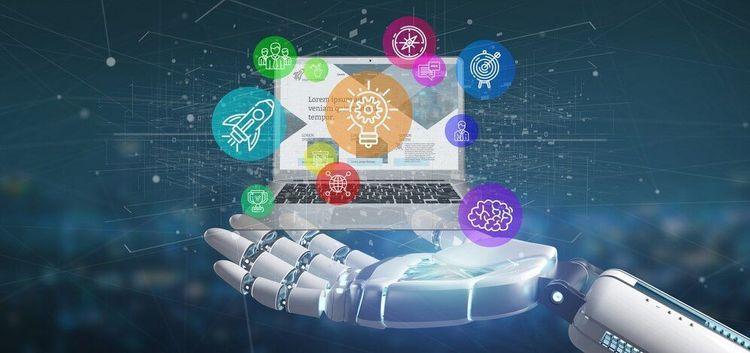How 5G Technology is Revolutionizing Online learning: Benefits & Key Impacts
Introduction: the Fusion of 5G and Education
The dawn of 5G technology is not just a leap forward for smartphones—it’s a game-changer for educational technology and online learning. Offering lightning-fast internet speeds, ultra-reliable low latency, and enhanced connectivity, 5G is rapidly transforming the e-learning landscape.This article delves deep into how 5G is revolutionizing online education, exploring its benefits, key impacts, and the new opportunities it presents for learners, educators, and institutions worldwide.
What is 5G Technology?
5G stands for fifth-generation wireless technology. It is indeed designed to deliver vastly improved broadband speeds, higher connection density, and lower latency compared to 4G and previous wireless standards. For online learners, this means:
- Download speeds up to 100 times faster than 4G
- Latency as low as 1 millisecond—enabling real-time interactivity
- Capability to support massive numbers of connected devices simultaneously
- Improved network reliability and stability
These features enable seamless, immersive educational experiences that were unthinkable just a few years ago.
The Benefits of 5G Technology for Online Learning
Integrating 5G networks into the educational sector leads to a wide range of advantages for students, teachers, and educational institutions. Here are some of the most notable benefits:
1. Ultra-Fast,Uninterrupted Connectivity
One of the biggest pain points in online learning has always been network interruptions,lag,or buffering. 5G resolves this by providing:
- seamless live video streaming for lectures and discussions
- Instant access to large files, cloud-hosted content, and educational platforms
- Smoother interactions in collaborative group projects and remote labs
2. Enhanced Mobile learning Accessibility
With 5G, high-speed internet access is no longer restricted to fixed locations. Mobile learning thrives as:
- Students in rural and remote areas can join online classes on-the-go
- Educational apps and resources become more accessible, even in bandwidth-challenged regions
- Flipped classrooms and hybrid learning models become more viable
3.Immersive AR and VR Learning Experiences
Augmented Reality (AR) and Virtual Reality (VR) are redefining what’s possible in digital education. With 5G:
- High-resolution,real-time AR/VR experiences are possible without lag
- Students can participate in realistic science labs,historical explorations,or medical simulations
- Educators can design interactive experiences that cater to various learning styles
4. Real-time Collaboration
Low-latency 5G networks enable instant communication and collaboration, making group learning truly interactive:
- Video conferencing tools and online whiteboards work seamlessly
- Remote assessments, feedback, and mentoring improve dramatically
- International collaboration between classrooms becomes practical and engaging
5. Greater Personalization and Adaptive Learning
Advanced AI-driven platforms require instant data exchange to deliver tailored learning experiences.5G supports:
- Adaptive content that responds instantly to learner progress
- Smart tutoring systems driven by real-time analytics
- Personalized learning paths, accommodating diverse student needs
Key impacts of 5G Technology on Online Education
The switch to 5G is not just about speed—it’s about enabling a new era for digital learning. Here are some transformative impacts of 5G on online education:
- Narrowing the Digital Divide: By bringing reliable, high-speed internet to underserved communities, 5G promotes educational equity worldwide.
- Supporting EdTech Innovations: 5G is the backbone for next-gen educational tools, including advanced learning management systems and remote labs.
- Boosting Student engagement: Immersive and interactive platforms keep learners motivated and attentive.
- Internationalization of Education: Institutions can connect with students from all corners of the globe, offering global perspectives and experiences.
- Resilience During Disruptions: During events like the COVID-19 pandemic, reliable online education supported by 5G ensures learning continuity.
“5G is not just another network upgrade; it’s the engine powering the next generation of digital learning and teaching excellence.”
Case Studies: 5G in Action in Online Learning
Real-world implementations underscore the transformative power of 5G technology in education:
South Korea: 5G-Enabled Smart Classrooms
South Korea was among the first countries to roll out 5G-powered smart classrooms.Students use AR headsets and high-definition video lessons with zero lag, enhancing STEM education and digital literacy.
United States: Rural Education & 5G
Several rural school districts in the US have deployed 5G hotspots on school buses, enabling students to participate in online learning during long commutes, ultimately improving homework completion rates and digital access.
United Kingdom: Medical Training with 5G & VR
UK universities have launched pilot programs using 5G for real-time VR surgery simulations. medical students gain practical skills in a safe, controlled digital environment, irrespective of geographic location.
Practical Tips: Maximizing 5G for Online Learning
- Stay Updated: Ensure your devices are 5G-compatible and take advantage of network upgrades when available.
- Explore AR/VR: Try out immersive learning platforms for a richer, interactive experience.
- Leverage Mobile Learning: Don’t be tied to a single location—embrace the mobility 5G offers.
- Collaborate Globally: Use 5G-enabled collaboration tools to connect with peers and educators worldwide.
- Prioritize Cybersecurity: As faster networks attract more traffic, ensure digital safety through updated privacy practices.
Conclusion: The Future of Learning is 5G Powered
5G technology is more than just an incremental improvement—it’s a foundational shift enabling a brighter, more inclusive, and engaging future for education.with benefits like ultra-fast streaming, immersive AR/VR, and real-time collaboration now within reach, teachers and students can unlock new possibilities in digital learning.
As 5G adoption accelerates, online learning platforms and educators should seize the possibility to innovate, ensuring learners everywhere reap the rewards of this technological revolution. The journey has just begun, and the full potential of 5G-powered online education is only starting to unfold.

